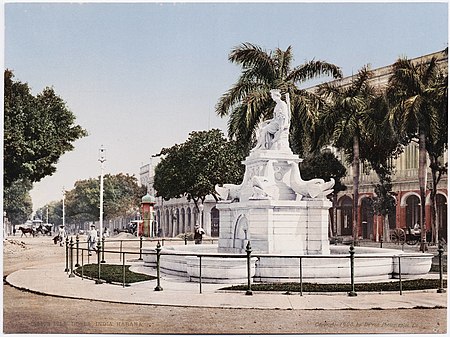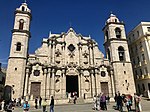Fuente de la India

Fuente de la India ("Fountain of the Indian woman") is a fountain by Giuseppe Gaggini in Havana, Cuba, at the south extreme of Paseo del Prado, about 100 m south of El Capitolio, between Monte and Dragones Streets. The figure represents the Indian woman "Habana" in whose honor Havana was named.Originally (1837) it was placed outside the city walls at the end of the Alameda which today is the Paseo del Prado. From 1803 until that time a statue of King Carlos III was located there. Its opening was an event in the then still young town of San Cristobal. In 1863, by the resolution of Council, the fountain was moved to the Parque Central. In 1875 it was put back in its current position, i.e. its initial one but facing towards the then called Campo de Marte. In 1928, when the adjacent area became the Plaza de la Fraternidad, the statue was rotated 90° to face the new Capitolio building.
Excerpt from the Wikipedia article Fuente de la India (License: CC BY-SA 3.0, Authors, Images).Fuente de la India
Paseo de Martí (Paseo del Prado), Havana
Geographical coordinates (GPS) Address External links Nearby Places Show on map
Geographical coordinates (GPS)
| Latitude | Longitude |
|---|---|
| N 23.133272222222 ° | E -82.358361111111 ° |
Address
Fuente de La India (Noble Habana)
Paseo de Martí (Paseo del Prado)
10000 Havana (Prado)
Havana, Cuba
Open on Google Maps










